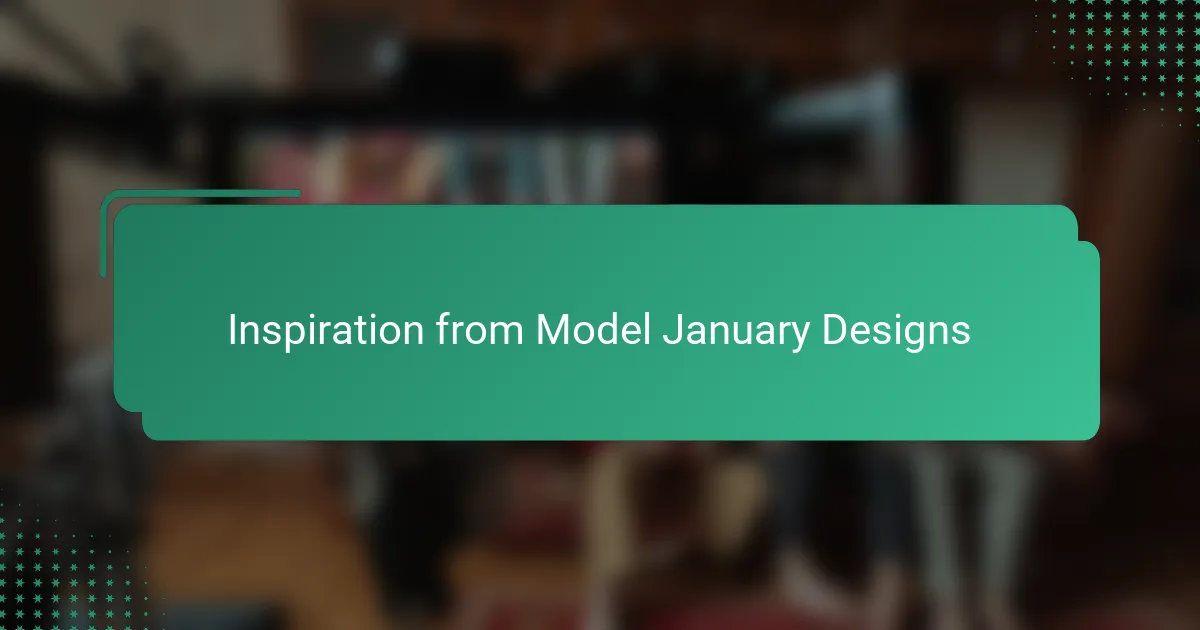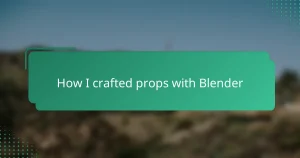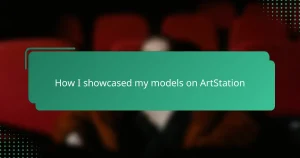Key takeaways
- Science fiction props blend realism with fantasy, serving as storytelling devices that enhance viewer engagement with their intricate designs and emotional weight.
- Incorporating elements like tactile interaction and unique materials is essential for creating authentic and versatile props that invite user participation in narratives.
- Embracing imperfections and varying textures adds depth to props, making them feel alive and connected to a larger story.
- Functionality should be central to prop design, ensuring they are not only visually appealing but also practical for user interaction and storytelling.

Understanding Science Fiction Props
Science fiction props are more than just objects; they are windows into other worlds, blending imagination with craftsmanship. When I first encountered these props, I was struck by how they carry stories and futuristic possibilities within their design. Have you ever held a prop and felt transported, as if touching the future itself?
What fascinates me is how these items balance between realism and fantasy. They need to feel believable while still pushing the boundaries of technology and creativity. In my experience, understanding this duality is essential to appreciating the artistry behind each piece.
I often reflect on how props shape the viewer’s perception of a science fiction universe. They anchor complex narratives in tangible detail, making abstract concepts feel accessible. This realization transformed the way I approach my own work, inspiring me to think beyond aesthetics and consider the story every prop tells.

Key Features of Science Fiction Props
I’ve noticed that one of the key features of science fiction props is their ability to merge functionality with futuristic aesthetics. Take the intricate buttons and glowing panels, for instance—they suggest advanced technology, yet often have a tactile, familiar feel. Have you ever wondered how such details make a prop believable enough to hold, yet mysterious enough to spark curiosity? That balance is something I strive for in my own designs.
Another element that caught my attention is the storytelling embedded in every scratch, dent, or worn edge. These imperfections hint at a larger history, a world beyond the frame. When I first saw this approach, it made me realize props aren’t just static objects—they carry emotional weight. I try to replicate this by imagining the journey each piece has been through, which adds depth and authenticity.
Lastly, the use of unconventional materials and bold shapes always impresses me. Science fiction props often defy traditional design rules, embracing asymmetry, unexpected textures, or vibrant lights. I find this freedom thrilling—it challenges me to rethink what a prop can be. Don’t you think this willingness to break norms pushes creativity into exciting new territories? For me, it’s a constant source of inspiration.

Introduction to Model January
Model January first caught my eye because of her uncanny ability to blend futuristic style with a distinctly human touch. Watching her embody characters wrapped in imaginative costumes and meticulously crafted props reminded me how vital presence is in bringing science fiction to life. Have you ever noticed how a single look or gesture can make a prop feel so much more than an object? That’s exactly what she does effortlessly.
What really inspired me was seeing how her confidence transforms each piece she interacts with — turning cold plastic and metal into storytelling devices filled with emotion. It made me realize that props aren’t just background; they become extensions of the performer’s character, communicating subtle details about the world they inhabit. From my own experience, this insight pushed me to approach my designs with an eye for expressiveness, not just functionality.
Model January also taught me about the power of versatility. Whether she’s posing with sleek gadgets or weathered artifacts, every interaction feels fresh and dynamic. I found myself asking, how can I create props that invite this kind of imaginative engagement? This question became a driving force in my work, reminding me that the best props invite not only suspension of disbelief but also active participation in the narrative.

Inspiration from Model January Designs
Model January’s designs struck me with their seamless integration of form and function. Her props aren’t just visually striking; they feel purposeful and alive. I remember the first time I tried replicating one of her signature pieces—it challenged me to rethink how subtle details can elevate a prop from mere decoration to a believable artifact.
What I find most compelling about her work is the way she infuses personality into every design. It’s like each piece carries a story waiting to unfold, inviting interaction rather than just admiration. Have you noticed how some props seem to almost breathe with character? That’s exactly the effect her creations had on me, urging me to focus on emotional resonance in my own props.
Another aspect that really influenced me is her bold use of unexpected textures and shapes. Model January isn’t afraid to break the mold, blending sleek futuristic lines with rugged, worn elements. This contrast sparked new ideas, reminding me that pushing boundaries often leads to the most memorable and engaging props. It made me ask myself, how can I incorporate that same fearless creativity without losing functionality?

Applying Model January Concepts
Applying Model January’s concepts in my own work meant shifting how I think about interaction between the prop and the user. I realized that a prop isn’t complete until it invites movement, touch, and story through its design. Have you ever felt that hesitation when picking up a prop, unsure if it responds to your imagination? That was the challenge I set for myself—to craft pieces that feel alive the moment you hold them.
One of the first experiments I tried was incorporating multi-sensory details, like varied textures and subtle weight changes inspired by Model January’s pieces. It wasn’t just about looks anymore; I wanted the props to communicate mood and history through the way they felt in hands. From my experience, this attention to tactile storytelling transformed my work into something more immersive and authentic.
I also began thinking about versatility like she does—how a single prop could adapt to different narratives and performances. Can a futuristic communicator also become a relic from a forgotten era? Playing with this idea encouraged me to design with layers of meaning, making every piece a little mystery that evolves as the story unfolds. I found that embracing this flexibility opens many doors, creatively and practically.

Creating Practical Sci-Fi Props
When it comes to creating practical sci-fi props, I’ve learned that functionality can’t be an afterthought; it has to live at the core of the design. I remember struggling with a prop that looked stunning but felt awkward to hold—once I adjusted the grip and balance, everything changed. Don’t you think a prop only becomes truly believable when it feels right in your hands?
In my experience, integrating interactive elements like buttons that click or panels that light up adds a layer of realism that’s hard to beat. These small details invite users to explore and engage, turning a static piece into something dynamic. I’ve found that thinking about how someone will actually use the prop—rather than just how it looks—makes all the difference.
Balancing aesthetics with practical constraints often feels like a puzzle. Sometimes, I’ll choose less flashy materials if it means the prop will withstand repeated handling or fit seamlessly into a scene. Over time, I’ve come to appreciate that the best sci-fi props aren’t just eye candy but tools that support storytelling in subtle yet powerful ways. Have you ever noticed how those props stick with you long after the scene ends? That’s the magic I aim for every time.

Tips for Effective Sci-Fi Prop Design
One tip I’ve found invaluable is to think about how a prop invites interaction. When designing, I ask myself: does this piece feel natural to hold or use? Early on, I struggled with props that looked incredible but felt awkward in hand, and that disconnect pulled me out of the immersive experience. Adjusting weight, balance, and grip transformed my work, making each prop feel alive and intuitive.
Another key insight from my experience is embracing imperfections and storytelling through wear and texture. Adding subtle scratches or uneven finishes isn’t just about realism—it’s about hinting at the prop’s past, its adventures. Have you ever picked up something and instantly imagined the stories it could tell? That’s the emotional connection I aim for, turning props into characters in their own right.
Finally, don’t shy away from mixing unexpected materials or bold shapes. I learned that breaking traditional design rules sparks creativity and makes a piece stand out. It can be a bit intimidating to stray from standard forms, but pushing those boundaries often leads to discoveries that deepen the prop’s personality and function. What if the weirdest idea becomes the most memorable prop? I’ve found that’s often exactly what happens.


